- Sennheiser EW-D ME3 SET Digital Wireless Headworn Microphone SystemThe EW-D ME3 SET from Sennheiser is a wireless system comprised of an EW-D EM wireless receiver and an EW-D SK bodypack transmitter. Ideal for public speaking, this system also includes an ME3 ...100847_base
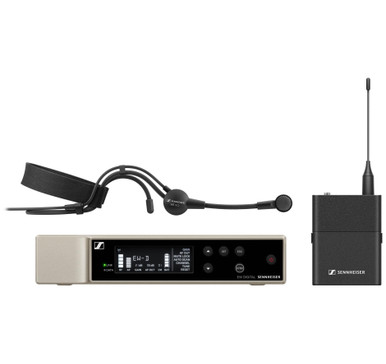
 $749.00
$749.00 - Shure SLXD14/153T Wireless Headworn Microphone SystemThe Shure SLXD14/153T Wireless Headworn Microphone System includes an SLXD4 dual-channel receiver, an SLXD1 bodypack transmitter, and accessories. Your performance should never be in question. ...46560_base

 $879.00
$879.00 - Shure SLXD14/SM35 Wireless Headworn Microphone SystemWhether presenting, educating, praising or entertaining, the SLXD14/SM35 Wireless Headworn Microphone System from Shure enables you to customize a wireless setup to meet the specific demands of ...46575_base

 $769.00
$769.00 - Shure BLX14/PGA31 Wireless Headworn Microphone SystemEnjoyed by public speakers, worship leaders, community theater groups, and fitness instructors, Shure’s BLX14/PGA31 Wireless Headworn Microphone System is unobtrusive and easy to use. This system ...44260_base

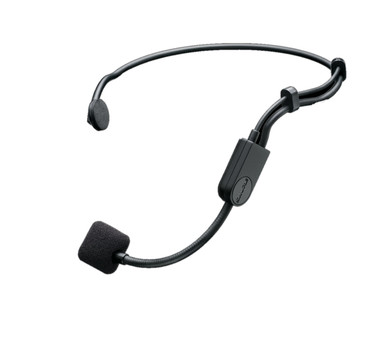 $349.00
$349.00 - Shure BLX14/SM31 Fitness Wireless Headworn Microphone SystemThe BLX14/SM31 Fitness Wireless Headworn Microphone System from Shure is ideal for capturing audio while providing the maximum capacity for movement--ideal for aerobics instructors, fitness ...44262_base

 $389.00
$389.00 - Audio-Technica ATW-3211N892x Network-Enabled Headworn Microphone SystemBring power and flexibility to your sound setup with wireless system ATW-3211N892x in Audio-Technica's 3000 Series. Receiver and transmitter each include easily visible display screens to stay ...46129_base

 $1,337.60
$1,337.60 - Shure GLXD14R+/MX53 Dual Band Wireless Headworn Microphone SystemThe Shure GLX-D+ Dual Band Wireless Rack System features the MX153 Headworn Earset for high-quality vocal performance and the GLXD4R+ half-rack receiver. The perfect combination of the automatic ...137172
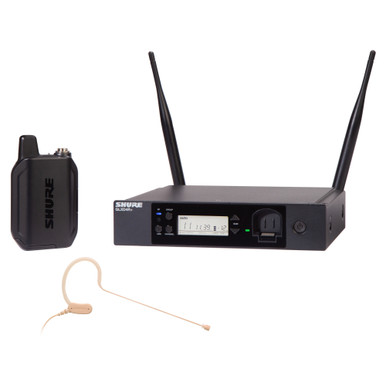
 $819.00
$819.00 - Shure GLXD14+/SM35 Dual Band Wireless Headworn Microphone SystemThe GLX-D+ Dual Band Wireless Headset System from Shure features the GLXD4+ tabletop receiver and the SM35 Mic for high-quality headworn vocal performance. The perfect combination of the automatic ...137167
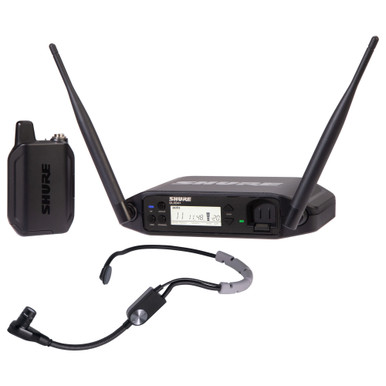
 $599.00
$599.00 - Shure GLXD14+/SM31 Dual Band Wireless Headworn Microphone SystemThe Shure GLX-D+ Dual Band Wireless Headset System features the versatile SM31FH Headset Mic for spoken word applications and the GLXD4+ tabletop receiver. The perfect combination of the automatic ...137166

 $599.00
$599.00 - Shure GLXD14+/PGA31 Dual Band Wireless Headworn Microphone SystemThe Shure GLX-D+ Dual Band Wireless Headset System features the PGA31 Headset Microphone for spoken word applications and the GLXD4+ tabletop receiver. The perfect combination of the automatic ...137165

 $559.00
$559.00 - Sennheiser XSW 2-ME3 Wireless Headworn Microphone SystemThe XSW 2-ME3 Wireless Headworn Microphone System from Sennheiser is great for singers and performers that need enhanced movement. This system includes a wireless receiver, lightweight bodypack ...56830

 $499.00
$499.00 - Sennheiser XSW 1-ME3 Wireless Headworn Microphone SystemThe XSW 1-ME3 from Sennheiser is a wireless headworn microphone system that's perfect for vocals--your hands are free, but your audio is captured perfectly. This system includes an intuitive ...75318
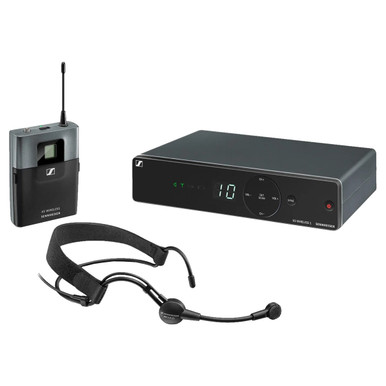
 $399.00
$399.00 - Shure BLX1288/MX153 Wireless Microphone Combo SystemBoasting analog wireless dual transmission, the BLX1288/MX153 Wireless Microphone Combo System from Shure is ideal for speech and music applications. This system includes a BLX1 Bodypack ...87064_base

 $799.00
$799.00 - Shure BLX1288/PGA31 Wireless Microphone Combo SystemShure’s BLX1288/PGA31 Wireless Microphone Combo System combines simple setup and an intuitive interface for onstage audio, from live performances to presentations. This system includes a ...44254_base
 $599.00
$599.00 - Electro-Voice RE3-BPHW UHF Wireless Headworn Microphone SystemBodypack UHF wireless set containing the HW3 supercardioid headworn microphone voice performance, presentations, and athletic instruction. The HW3's sound is crisp and natural, and the ...39736_base

 $659.00
$659.00 - Shure BLX14R/SM35 Wireless Headworn Microphone SystemThe BLX14R/SM35 Wireless Headworn Microphone System from Shure combines hands-free performance and user-friendly operation with audio performance you can trust. This system includes a BLX4R rack ...27129_base

 $469.00
$469.00 - Shure BLX14R/MX53 Wireless Headworn Microphone SystemFree up your hands and increase your mobility onstage. The BLX14R/MX53 Wireless Headworn Microphone System from Shure is a rack-mount presenter system that delivers more freedom of movement ...44269_base

 $599.00
$599.00 - Audio-Technica ATW-2192XCI 2000 Series Wireless Earset SystemThis wireless earset system from Audio-Technica is comprised of a ATW-R2100c receiver and ATW-T210c body-pack transmitter with BP892xcW MicroSet omnidirectional condenser headworn microphone. ...141881_base

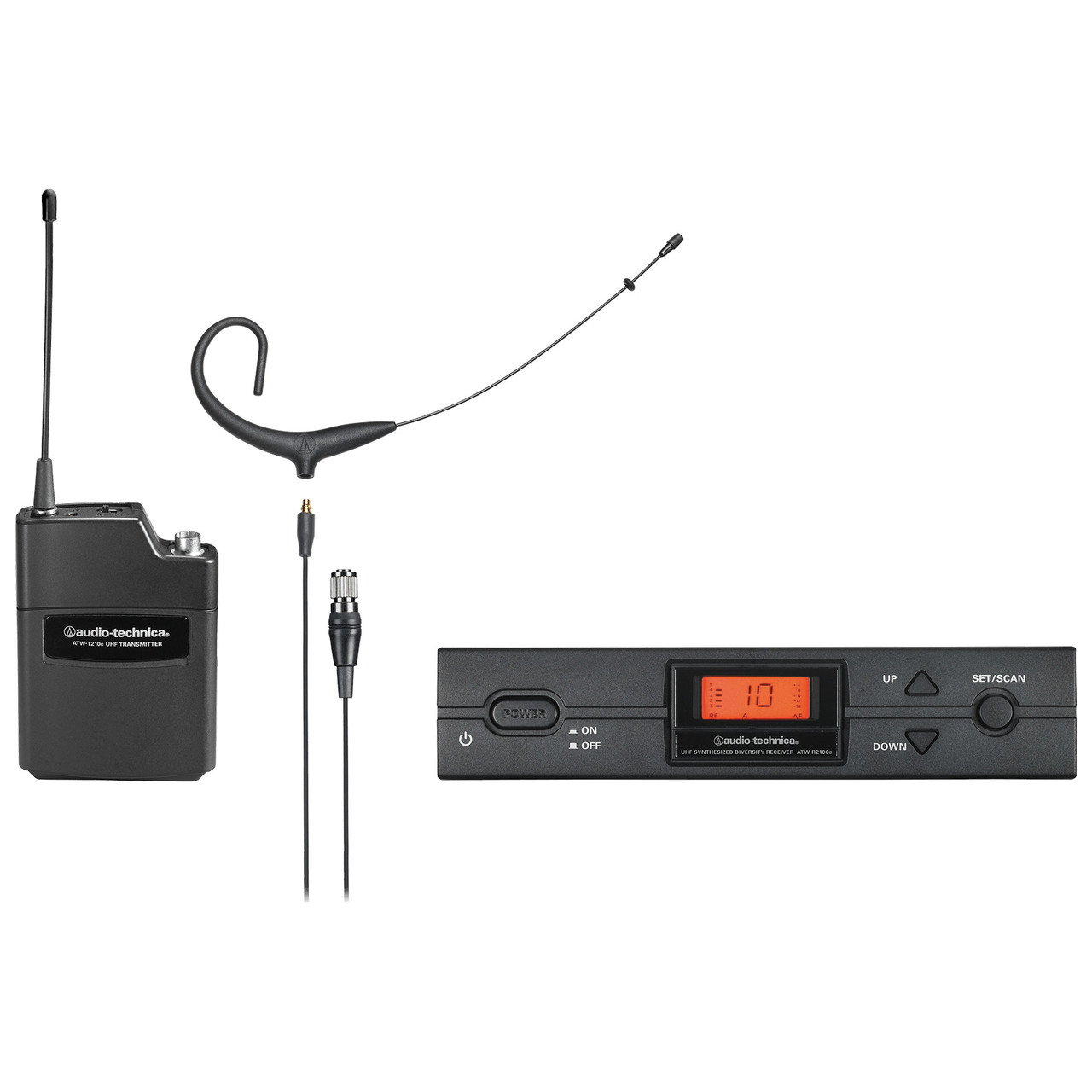 $836.00
$836.00 - Point Source Audio EO-9WL Series9 Omni Earmount MicrophoneThese professional-grade microphones can handle the powerful vocals of a live sound event to the quietest whispers of a conversation in a studio—all while extending your investment with a ...139255_base

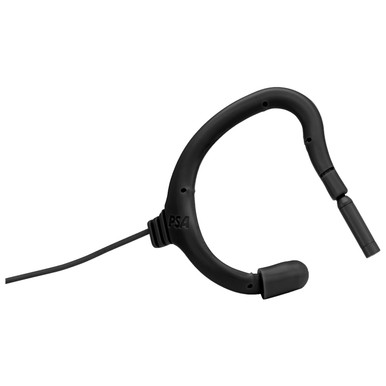 $569.00
$569.00 - Audix HT5 Condenser Headworn MicrophoneThe HT5 condenser vocal microphone has a uniformly controlled omnidirectional polar pattern and is designed to capture vocals from a comfortable distance of 2″-3″ off-axis. With a wide ...28319_base
 From $319.00
From $319.00
Sound Productions’ wireless headworn microphone systems offer a unique blend of professional-quality audio, hands-free activity, and wireless versatility. Small but mighty, headworn microphones are designed specifically for versatility, portability, and for delivering accurate sound without distracting your audience. Most headworn mics are designed with the mic component placed at the end of a repositionable gooseneck, so you can adjust the mic placement to exactly capture the sound you want.
Versatility is a cornerstone of every headworn microphone, making the possible applications limitless—while the added wireless benefits add even more freedom of movement and flexibility in setup! Wireless headworn microphone systems are ideal for public speaking environments including lecture halls, classrooms, business conferences and convention centers, live broadcasts, entertainment venues, and houses of worship. Headworn mics allow singers, actors, and other performers to enjoy enhanced freedom of movement on the stage. Instructors in active environments (think fitness trainers or presenters at how-to seminars) can clearly convey information while keeping their hands free for demonstrations.
Lightweight, flexible, durable, and easy to camouflage, wireless headworn microphone systems (also called wireless headset microphones and wireless microphone headset systems) boast an astounding range of features, including sweat and water resistance. Sound Productions carries top brands including Audio-Technica, Electro-Voice, Galaxy Audio, Samson, Sennheiser, and Shure!
FREQUENTLY ASKED QUESTIONS
Q: How do wireless microphones work?
Wireless microphone systems operate by using a battery-powered transmitter (for example, a handheld mic or a bodypack paired with a lavalier or headworn mic) to translate sound into an electronic signal, sending the signal over radio frequencies (RF) to a receiver, which then disperses the signal to a loudspeaker or other piece of gear that translates the signal back into sound.
Q: What do you need for a wireless microphone system?
The exact number and type of wireless components you need for your microphone setup will vary according to your application, but at its simplest, you’ll need one transmitter (the wireless microphone) and one receiver. If you’re hoping to use a lavalier or headset microphone, you’ll need a bodypack to connect the microphone to. Fortunately, Sound Productions carries comprehensive systems for Handheld, Headworn, and Lavalier wireless microphones to help you get all the components you need; just note the “In the Box” section that lists all the included components when browsing these products.
Need help deciding between headworn and lavalier options? Our article Go Hands-Free: Lavalier Vs. Headworn Microphones outlines the best applications for each option.
Q: How do you use a wireless microphone?
For a wireless transmitter to communicate with a receiver, they need to be on the same frequency. This is measured by the distance between the peaks of a radio wave: if there is a lot of distance between each wave, it’s a low frequency, whereas if the waves are more condensed together, there is a high frequency to the waves. As a rule, low frequencies can be transmitted a farther distance but tend to be weaker and more easily impeded by solid objects, while high frequencies can’t transmit as far but are stronger.
Q: How do you find the frequency for a wireless microphone?
- Power on your wireless receiver. Most receiver models provide an automatic scan feature that can be accessed by its own designated “Scan” button or easily accessed via a main menu on the front display or panel. The receiver will scan for available frequencies.
- Synchronize the receiver to your wireless transmitter to ensure they’re operating on the same frequency.
- You can manually adjust the frequency of your transmitter to match the information displayed on the front of your receiver.
- Alternatively, many wireless components boast a feature called Infrared Sync. Locate the infrared eye on both the transmitter and receiver, as well as the “Sync” button on the receiver. Hold the transmitter 4-6” away from the receiver and press “Sync” on the receiver.
- The receiver’s display should indicate when the process is complete—at which point you’re ready to go!
Q: Can I use more than one wireless microphone with a receiver?
If your wireless system uses more than one transmitter, you will need to coordinate frequencies. Each channel’s frequency must be sufficiently spaced apart to avoid interfering with each other’s signals. Higher-end wireless systems are more efficient and can pack separate channels tighter together, but you’ll still want to provide some margin, so the signals don’t bleed together and cause dropouts, noise, or other audio problems.
(When setting up larger systems of 10, 15, 20, or more wireless units, this process can be more complex. Call the experts at SoundPro if you have any questions about setting up a larger wireless system, or if you want to learn more about wireless audio.)
Q: What frequency is best for a wireless mic system?
Frequency types include VHG, UHF, 2.4GHz (Wi-Fi), and even Bluetooth. For most wireless microphone systems, UHF is the best choice due to its greater bandwidth, optimized reliability, pristine audio quality, and available frequency agility.
Q: What is the best wireless microphone for a church or other house of worship?
Handheld wireless mics are a great choice for a mic that is “passed around” amongst the congregation or to a guest singer or performer for one musical number. Wireless lavalier mics work well for speakers and presenters that face forward and don’t move around on stage, but headset mics are quickly becoming the new standard for worship applications where the freedom of wireless is key. Check out our article about Considering Wireless Mics for your Worship Facility for more information.
For more information, e-mail us at info@soundpro.com or call our knowledgeable Account Managers at 972-550-0001.





